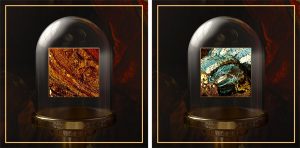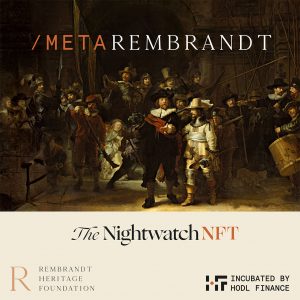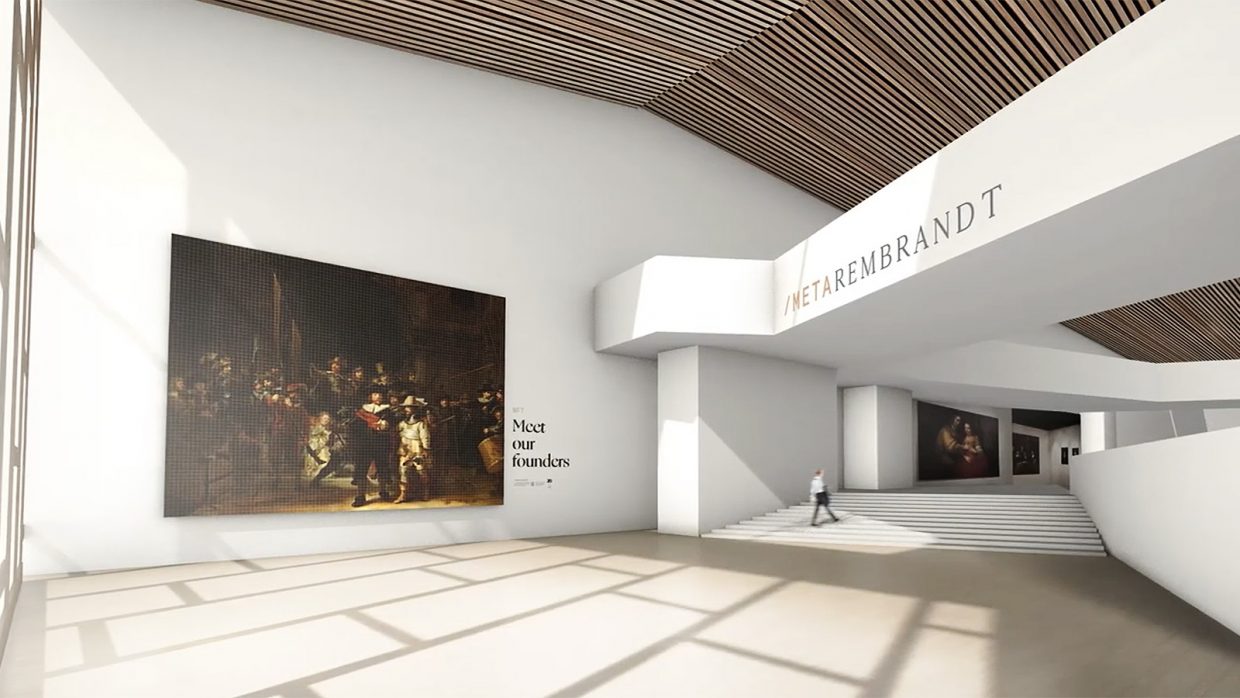A metaverse museum with every single one of Rembrandt’s paintings is in the very near, crowdfunded future.
Launched by the Rembrandt Heritage Foundation in partnership with Hodl Finance, MetaRembrandt will offer a fractionalized sale of a digital restoration of “The Night Watch,” the Dutch painter’s iconic 1642 work. Proceeds from the sale will go towards funding the creation of a metaverse museum to house 306 Rembrandt paintings, which will be exclusively accessible to NFT holders.
As of this writing, it’s not known when the collection will drop, though the aspirations and goals are clear: to preserve and make Rembrandt accessible in the metaverse. Edzard Gelderman, Chairman of the Rembrandt Heritage Foundation, and Aron Pierre, Hodl’s Chief Marketing Officer, shed more light on the project’s finer details below.

MetaRembrandt’s inaugural sale features 8,000 fractions of “The Night Watch.” Image: @MetaRembrandt on Instagram
What was the motivation behind MetaRembrandt?
Gelderman: We began collecting pictures of all of Rembrandt’s paintings in 2006. Dr. Ernst van de Wetering — a member of the foundation who spent his whole life studying Rembrandt — was allowed to visit and take high-resolution images of all of the paintings, including those not accessible to the public. We digitally restored these images and created a traveling exhibition starting in Amsterdam. Then, because of COVID, the exhibit couldn’t travel. We wanted to preserve this collection for upcoming generations — because no one in the world has all of the paintings together.
We decided to create something in the metaverse. This, of course, takes financing and collaboration with a developer if you want to do it well, which led us to the idea for this project.
How were the NFTs prepared?
Pierre: As NFT experts at Hodl, we have a lot of connections within the market. We worked with the foundation to help them prepare the smart contract and add different threads to the NFTs. The eye of the captain in “The Night Watch” is one example. We also added utilities to these NFTs. Owners will be listed with their NFT domain or their normal name in the museum. When they stake their NFT, they’ll be able to earn extra income by renting out the NFT as a ticket to the museum’s full collection.
How are you approaching the pricing of these NFTs?
Gelderman: We don’t want to make it too expensive, of course, or be too exclusive. It’s all about finding the balance between the risks of charging for tickets and attracting the most visitors to the museum. It’ll be much cheaper than going to a real museum, but it would also be nice for the founders to have the NFT bring them some extra value, which is why we’ve arranged it like this, but we still have to calculate that balance.

The MetaRembrandt NFTs will span rarities, including the Hidden Stories tier. Image: @MetaRembrandt on Twitter
Who is MetaRembrandt hoping to reach with the project?
Pierre: We’re trying to reach as many people as possible. To accommodate this, we’ve created a simple payment solution so that people can really easily buy the NFT on the site. We also intend on creating a number of tutorials to teach people how to use the technologies to experience the whole museum, including supporting documentation on how to use MetaMask. Of course, there’s already a niche audience of NFT collectors that we’d like to keep interested, but finding the balance between new visitors and these collectors is key.
How do you plan to keep engaging with the founding community after the sale?
Gelderman: We have a lot of films and materials about Rembrandt, which we can make accessible. We published a book, might conduct online lectures about the paintings, and potentially sell other paintings as well.
Pierre: When it comes to introducing certain initiatives or proposals, we’re also looking to open voting and selection to the members. Improving the museum, for example, or if the community has an idea of what they want to do, they can also create their own proposals to be voted on.
What are some of your plans and aims for the MetaRembrandt museum?
Pierre: We’d like to explore new technologies to experience the art in a new way. For example, using VR to create a fully immersive experience of walking in the museum. We were also thinking about using some sort of glove technology so that you can actually touch the paintings.
Gelderman: I hope that we become an example for older, more traditional institutions [in how to] display art in interesting ways. Our aim is to really open up all this information we gathered over the years and to make it accessible to more people. For me, it would be really nice if it works — but how long it will take and what kind of people come… it’s a big adventure for us. I really hope that young people are attracted to it, to broaden the audience and visitors of a museum.



